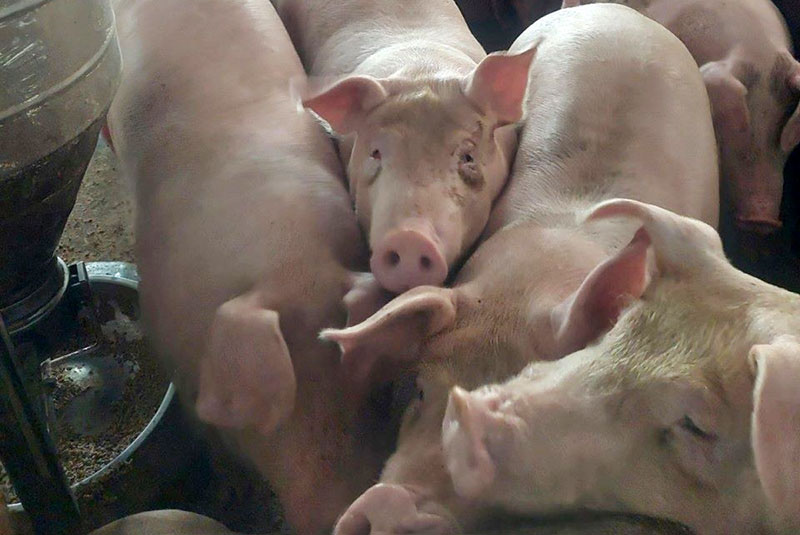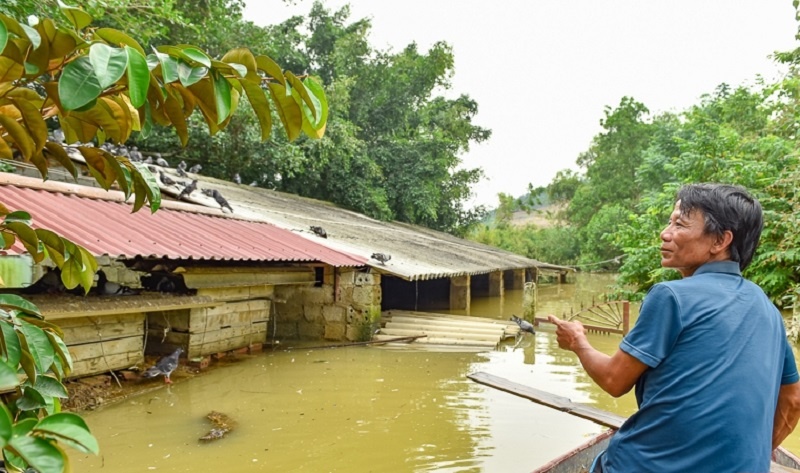Pig prices have continued to increase in many sessions. In some northern provinces, pig prices have exceeded 70,000 VND/kg – the highest since the beginning of the year.
Pig prices today (September 25) continued to increase slightly in all three regions. Currently, the Northern region still holds the highest transaction price in the country. The nationwide survey price this morning fluctuated between 63,000 – 71,000 VND/kg.
Specifically, on the morning of September 25, pig prices in the North continued to increase by 1,000 VND/kg in Yen Bai and Ninh Binh, reaching 69,000 VND/kg, equal to the transaction price in Ha Nam.
Currently, in the Northern region, only Lao Cai and Nam Dinh are buying and selling at 68,000 VND/kg. Traders in the remaining localities are purchasing at around 69,000 – 71,000 VND/kg.

In the Central Highlands region, after being adjusted up by 1,000 VND/kg, the current price of live pigs in Quang Tri and Ninh Thuan is 65,000 VND/kg, Dak Lak is 66,000 VND/kg.
According to the latest survey, live pigs in this market are being traded in the range of 64,000 – 69,000 VND/kg.
The southern live pig market also increased slightly in price in Bac Lieu, Hau Giang and Ho Chi Minh City, reaching 64,000 VND/kg, 65,000 VND/kg and 66,000 VND/kg, respectively.
A survey at some traditional markets in Thanh Xuan district showed that pork is being sold at prices ranging from 130,000 – 170,000 VND/kg, an increase of 10,000 – 15,000 VND/kg depending on the type. Of which, spare ribs, shoulder and belly are often more expensive, ranging from 150,000-170,000 VND/kg.
Ms. La Thi Lieu – a pork trader at Nhan Chinh market (Thanh Xuan, Hanoi) said that after the recent storm, the supply of live pigs increased sharply, pushing up the price of pork.
According to experts, the reason for the continuous increase in live pig prices in recent days is partly due to the impact of storm Yagi and floods that caused severe damage to farms, many places lost everything or had their barns deeply flooded, and partly because of traffic disruptions, the price of live pigs also increased locally in some localities.
Mr. Nguyen Van Chinh – Ha Nam Livestock and Poultry Wholesale Market Management Board – said that the storm and flood prevented pig purchasing and raising activities from recovering quickly, so the supply decreased. At its peak, the number of live pigs coming to the market was about 1,500 a day; now there are only about 1,100-1,200 a day.

According to the Ministry of Agriculture and Rural Development, storm No. 3 and heavy rains have killed 26,485 livestock and nearly 3 million poultry. Barns were severely damaged, making herd restoration difficult.
Mr. Duong Tat Thang, Director of the Department of Livestock (Ministry of Agriculture and Rural Development), said that according to statistics, the northern provinces had about more than 22,000 livestock and more than 3 million poultry killed by the recent storms and floods.
“Compared to the total herd of more than 30 million livestock and hundreds of millions of poultry, the number of deaths due to the recent floods does not affect the supply and meeting consumer demand from now until the end of the year, especially the upcoming Lunar New Year,” said Mr. Thang.
Faced with the above reality, the Ministry of Agriculture and Rural Development has directed businesses and industry associations to join in supporting breeding animals, feed, materials, and disease prevention… to quickly restore production and meet maximum food demand.
Sharing the same view, Mr. Nguyen Xuan Duong, Chairman of the Vietnam Livestock Association, said that the recent floods basically did not greatly affect the food supply of the domestic market.
“The storms and floods have a certain impact on the market, but not significantly, because the ratio between the total herd and the damage that has just occurred is only a few percent. Therefore, if we organize production skillfully, we can still make up for domestic demand. Besides, from now until the end of the year, livestock farmers still have 4-5 months to ensure a full cycle in livestock farming to restore the herd, enough time to compensate for the shortage due to the number of deaths due to floods,” said Mr. Duong.
Hong Huong
Kinh Doanh Electronic Magazine
